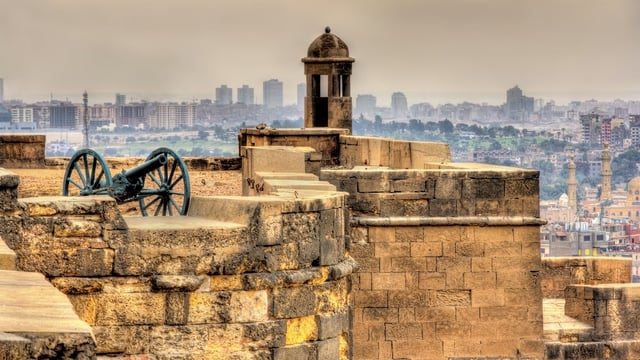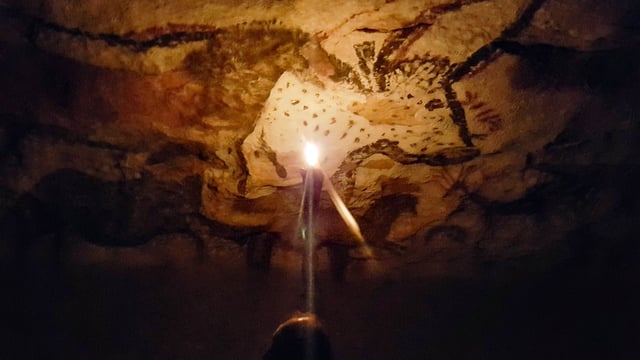- Thomas Dowson
- Last Checked and/or Updated 15 December 2021
- No Comments
- Berlin, History with Kids
Little Big City Berlin blew me away. Waiting in the queue I expected to spend about half an hour inside the attraction and take a dozen or so photographs. More than two hours later and over 250 photographs – I am still agonising over which ones to include. Genuinely, I could have stayed longer and taken more photographs. So my upfront apologies to medieval Berlin’s very own Robin Hood, Albert Einstein, Martin Luther King Jr, Winston Churchill, Queen Elizabeth II and David Hasselhof. These are all individuals who have played a part, real and mythical, in the story of Berlin; from its Slavic origins to the recent divided past. Each one, along with many other individuals and events, makes an appearance in LBCB’s miniature representation of that history.
Although the use of miniature scale models to tell historical stories is not new, what I did not expect was the attention to detail – both the specifics of the history being told and the way in which that history is presented for visitors to explore. I was very impressed by the measures that have been set in place to keep this particular attraction safe.


Scale Matters

Whether or not you know what Borchardt looked like, the iconic bust is instantly recognisable. And wonderfully accurate for its size. This is because of the scale used for Little Big City’s miniature Berlin.
The standard size for model landscapes that we are used to, such as indoor model railways, is 1 to 87. That is 1 unit of measurement on the model represents 87 units in real life. To show off my new-found knowledge, this is called the HO Scale. This scale was adopted world wide to make model-making an affordable hobby. If you have ever seen one of these models, you will remember that the human figures are quite small, and as a result somewhat indistinguishable. Sometimes it is difficult to know if you are looking at a man or a woman.
The scale used by LBCB, 1:24, means the human figures can be significantly bigger. To get an idea of the size, look at the photograph above of the technical manager holding a newly printed female figure. Bigger figures allows them to have individual features to the point where they are in fact recognisable. The larger scale together with the quality that can be achieved using 3D printing technology is such that the figures are fairly accurate representations. Anyone who knows what Winston Churchill looked like will immediately recognise his likeness.
Having recognisable figures is important because the creators of miniature Berlin believe, understandably so, that it is individuals as much as events who have shaped the story of Berlin. So in conveying these people’s stories, it is more than useful that they are recognisable, either physically or through their actions.
My low expectations were blown away precisely because of the scale used. I was expecting a standard model showing different periods of Berlin’s history, the kind we see in model railways, with small unidentifiable people. By having bigger human figures and even recognisable characters, the creators are able to do so much more.
An interesting outcome of using this particular scale is that Berlin’s iconic TV Tower, the Fernsehturm, can not be included at its full height. The ceiling is simply not high enough. To get around this, the creators included the tower in the process of being built.
Dealing With Berlin’s Troubled Past
Any attempt to represent Berlin’s history raises difficult challenges. More so when the audience is primarily young children. Although miniature Berlin does not shy away from some of the horrific aspects of Berlin’s past, certain events have not been included, but not without considerable thought.
Take for example the Anhalter Railway Station, pictured above. Opened on 1 July 1841, this station was a significant aspect of industrialised Berlin. The station linked Berlin to cities such as Leipzig, Frankfurt am Main, Munich, Vienna and Prague. By the start of 20th century trains from here went as far as Rome, Naples and Athens. There is, however, a darker side to this station’s history. Anhalter Station was one of three deportation stations in Berlin; between 1942 and 1945 over 9,600 Jews were sent from Berlin to Theresienstadt (in what was then Czechoslovakia) via this station.
The creators chose to exclude the deportation of Jews and others from Anhalter Station, or any of the other deportation stations in Berlin. And they have done so accepting not everyone will agree with their reasons. First, they are mindful of the age profile of their visitors. Secondly, there were no concentration camps in Berlin. And this attraction is focuses on buildings and events in Berlin. To include a deportation station would then tell only part of that horrific history – and that would, by omission, be a misrepresentation.
In no way, however, are the horrors of Nazism and the Holocaust omitted from Berlin’s story here. Above is a representation of the ‘Nazi Book Burnings’ that took place on 10 May 1933 in what was then called Opernplatz. Visitors to Berlin will know this square as Bebelplatz, where there is a thought-provoking memorial to the burning of books by Nazi youth – The Empty Library.
The burning of books by students was just a prelude. Five years later Berliners experienced Kristallnacht – a national pogrom against Jews. The name comes from the shards of glass that covered the streets after paramilitary forces and civilians smashed the windows of Jewish owned shops and businesses. This heinous nationwide event is included in Little Big City Berlin.
Presenting Berlin’s Past
Berlin’s history is divided into six zones. They are: Early Berlin, The Age of Industry, Weimar Republic and the Golden 20s, Berlin 1933, Devastated Berlin, and The Divided City. Within each zone there are a number of buildings and structures that form the backdrop to many more events that have made the German capital what it is today.
Just walking through the different zones, there is much to see in development of Berlin in the various models. From the simple Slavic settlement, to the medieval city palace, to the factories of the Industrial Age, and on into the recent past. A number of interactive features enable a more active participation … while David Hasselhoff sings you can help him bring down the Wall. David Hasselhoff might like to think that his performance at the wall in 1989 helped brought the Wall down, sadly this is not true. So many people now associate the Wall with the Hoff, the truth has been so mythologised it no longer matters any more. The event and its myth is as much a part of Berlin as any other event.
You can get even more out of your walk-through experience by looking out for the smaller of the blue information panels. For it is on these that you will learn about the many individuals who have lived or visited Berlin, not just the big sweeps of Berlin’s past. Who has not heard about JFK’s visit to west Berlin? Did you know that Martin Luther King Jr also visited the city? I did not, but apparently he preached in East Berlin on 13 September 1964. These are the fascinating vignettes of Berlin’s history you will get by searching amongst the buildings and the people.
Once you have finished at the ticket counter, a passage leads you to the start of miniature Berlin. The walls have information about the events included in chronological sequence. There is no need to stop and read each one, as they are included in the models, as I will show below.
Early Berlin: A Slavic settlement in the shadow of St Nicholas church – the first stone church in Berlin. You will notice that there are two different information panels; these appear throughout. The larger of the two gives more of a general historical overview of the period and/or feature you are looking at. It is always set apart from the model. The smaller panels are set amongst the ‘action’ of the model and give information about the event/people being portrayed. Text on all of these is in both German and English.
The Age of Industry: the Borsig-Werke factory founded in 1837.
Weimar Republic and the Golden 20s: Haus Vaterland – a pleasure palace on Potsdamer Platz.
20.01.1929 The Berliner Elli Blarr becomes the very first female taxi driver in Germany.
Berlin 1933: The burning of the Reichstag, the German parliament, on 27th February 1933. The front of the model is flat and white, the effects of the fire as it consumes the building is created by projecting a moving image on to the model to give the impression of the fire as it rages out of control.
1936 As a black man, Jesse Owens not only crushed Hitler’s myth of Aryan supremacy at Hitler’s Olympics (he won four gold medals), and he did so wearing the prototype of leather track shoes that would help the German shoemaker Adolf ‘Adi’ Dassler launch his own company: Adidas.
Devastated Berlin 1945: the Kaiser Wilhelm Memorial Church – badly destroyed in a bombing raid on 23 November 1943. The backdrop is a projected moving image.
The Divided City: the 1961 showdown when East German border guards refused to let Americans pass through Checkpoint Charlie.
Look beneath the model table where all the action is, and see underground Berlin.
The Divided City: JFK’s “Ich bin ein Berliner” speech, 26 June 1963. One of the most memorable events at the height of the Cold War.
Trabant Ride ‘n Fly
Experiencing the history of Berlin has to include a trabant.
As much as I loved exploring Berlin’s history in miniature form, the trabant ‘ride’ at the end was a wonderful surprise. This is a new addition for visitors to Little Big City Berlin in summer 2020, so I am not going to spoil the surprise. From what I saw though, adults loved this as much as the children. A delightful and light-hearted end to a fascinating experience, that manages to capture much of Berlin’s character. Go and see for yourself!
To continue this wonderful experience out on the streets of Berlin, I recommend a 75 Minute Drive Around Berlin in a Trabant. You will even get a souvenir Trabant drivers license. Or immerse yourself in the history of this iconic automobile and visit the Berlin Trabi Museum, which has 14 models, including a camping Trabant and military models.
Opening Hours
Monday to Friday: 11h00 – 17h00
Saturday, Sunday and public holidays: 11h00 – 18h00
Ticket Prices
Adults (15 and over): €10.00 if booked online, in advance (€18 on the day)
Children (3 to 14): €10.00 if booked online, in advance (€12 on the day)
Buying Tickets
You are advised to book a time slot and buy tickets in advance. Tickets can be purchased on the GetYourGuide website. Buying a ticket in advance is €3 cheaper than buying it on the day, at the attraction. And you have the ability to cancel it up to 24 hours in advance and get a full refund.
Facilities
There is a gift shop that you pass through to exit the attraction. Water and Soft drinks can be purchased at the entrance. From the entrance and the ticket counter, visitors are required to climb a short flight of stairs to the models. An elevator is available for people with mobility impairments.






